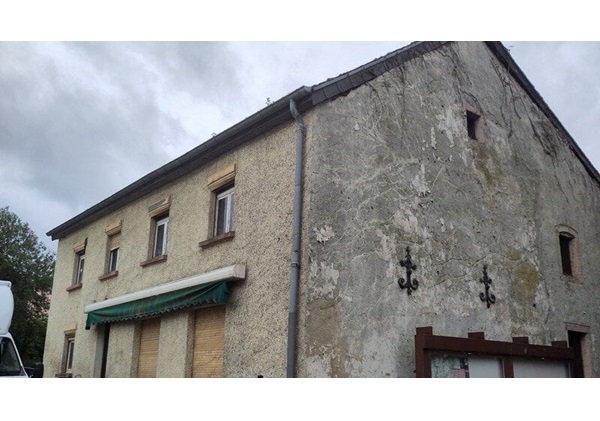 Credit: change.org
Credit: change.org
Residents of Consdorf have recently launched a petition to save a historic building in their village centre from demolition.
Led by Carole Tompers, along with a local archaeologist and historian, the initiative seeks to preserve the former grocery store known as "Beim Lauesch Henriette," a structure the petitioners deem of significant historical and cultural value.
The municipal administration of Consdorf, which has owned the building for two decades, recently announced plans to demolish it to create a small village square. Advocates argue that the gain in public space would be minimal compared to the irreversible loss of the historic property. They emphasise the building’s deep connection to the community, having served as a grocery store, regional bank and residential home over the centuries.
The building dates back at least to the 18th century, appearing on the Ferraris map (1770–1777) and the 1818 cadastral map. It once featured a bakery oven and has undergone multiple architectural transformations, including a Late Baroque facade. Its proximity to a nearly 1,000-year-old church further underscores its importance in Consdorf's historical core and the likelihood that it may be older than it appears.
Historical photographs from 1920-1944 reveal modifications over time, such as the addition of shop windows and decorative details, blending the structure’s functional and cultural heritage. Advocates believe the building’s interior may hold additional historical treasures, such as ornate plaster ceilings or wooden floors and old doors or vintage tiles, which have yet to be fully assessed.
Supporters of the petition argue that the building embodies the village’s collective memory, serving as a tangible link to its past. “Buildings are the ‘hardware’ of our history. If we destroy them, all we have left is ‘software,’ which is far less enduring,” the petitioner, Carole Tompers, stated.
The potential for archaeological discoveries during demolition further complicates the project. The building sits in Consdorf’s historic core, near a former cemetery, and could reveal buried remains of the ancient cemetery wall or other old structures.
Critics question the municipality’s approach, citing 20 years of inaction that have left the building in poor condition. They argue that renovation could be a viable alternative to demolition, preserving the architectural integrity of the village while avoiding unnecessary costs. The proposed demolition is estimated to cost €400,000, part of a broader €1.5 million project for the square and a new kiosk. Advocates contend that these funds could be better allocated, especially given doubts about the square’s practicality and its impact on the village streetscape.
The petitioners are therefore urging residents and supporters of cultural preservation to sign their petition. They aim to protect this vital piece of Consdorf’s history for future generations. So far, around 300 signatures have been gathered (out of the next target of 500 required). Those interested in supporting the cause can visit the petition site: https://chng.it/2h4gCxrbnP.








